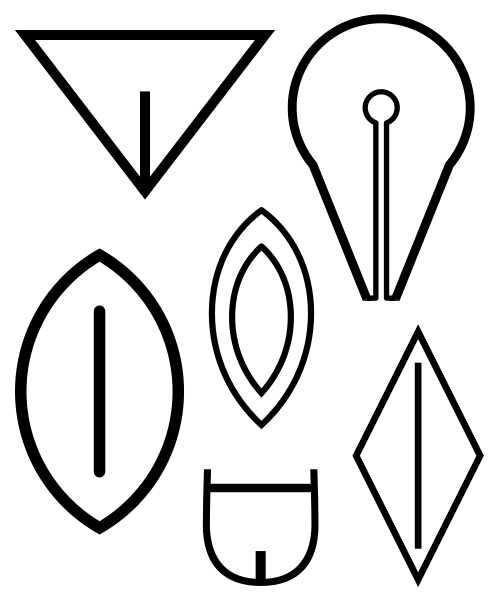Fil:Vulva symbols.svg

Storleken för denna PNG-förhandsvisning av denna SVG-fil: 500 × 600 pixlar. Andra upplösningar: 200 × 240 pixlar | 400 × 480 pixlar | 640 × 768 pixlar | 853 × 1 024 pixlar | 1 707 × 2 048 pixlar.
Originalfil (SVG-fil, standardstorlek: 500 × 600 pixlar, filstorlek: 3 kbyte)
Filhistorik
Klicka på ett datum/klockslag för att se filen som den såg ut då.
| Datum/Tid | Miniatyrbild | Dimensioner | Användare | Kommentar | |
|---|---|---|---|---|---|
| nuvarande | 24 september 2022 kl. 05.20 |  | 500 × 600 (3 kbyte) | Smasongarrison | slimmed down with svgomg // Editing SVG source code using c:User:Rillke/SVGedit.js |
| 5 april 2017 kl. 07.51 |  | 500 × 600 (4 kbyte) | AnonMoos | Reverted to version as of 11:32, 2 September 2008 (UTC) | |
| 15 januari 2017 kl. 22.38 |  | 938 × 1 125 (108 kbyte) | JMCC1 | error in egyptian symbol | |
| 2 september 2008 kl. 13.32 |  | 500 × 600 (4 kbyte) | AnonMoos | tweaking most-recently added symbol for exact symmetry | |
| 1 oktober 2007 kl. 00.55 |  | 500 × 600 (4 kbyte) | AnonMoos | adding further symbol | |
| 4 september 2007 kl. 09.13 |  | 500 × 600 (3 kbyte) | AnonMoos | adding symbol | |
| 26 augusti 2007 kl. 22.48 |  | 500 × 600 (2 kbyte) | AnonMoos | Four symbolic representations of external female genitals as they have been used in various historical/cultural contexts: 1) Upper left: A schematized drawing of the pubic triangle; among other things, this is the earliest archaic form of the ancient Sum |
Filanvändning
Följande sida använder den här filen:
Global filanvändning
Följande andra wikier använder denna fil:
- Användande på als.wikipedia.org
- Användande på ca.wikipedia.org
- Användande på cs.wikipedia.org
- Användande på de.wikipedia.org
- Användande på en.wikipedia.org
- Användande på en.wikiquote.org
- Användande på es.wikipedia.org
- Användande på fr.wikipedia.org
- Användande på ja.wikipedia.org
- Användande på pl.wikipedia.org
- Användande på ru.wikipedia.org
- Användande på uk.wikipedia.org
- Användande på uz.wikipedia.org
- Användande på www.wikidata.org
- Användande på zh.wikipedia.org
